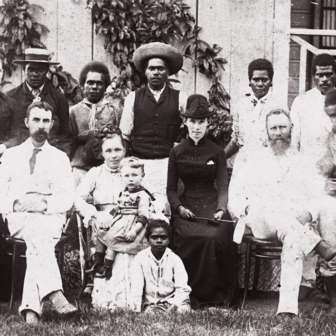The title of Alyx Gorman’s engrossing new book All Women Want is surely a nod or retort to the “great question” Sigmund Freud claimed he hadn’t been able to answer: “What does a woman want?”
As Gorman showcases, without giving Freud explicit attention — after all, feminists have already been there, done that — women want all sorts of things, from casual sex through to none. Some want relationships, others have done their dash or want to experiment with new ways of relating.
Gorman talks to women who buy sex toys, watch porn, enjoy sex parties, pay for sex and who get off reading romance books and fan fiction. On the other side of #MeToo, hers is a book “about pleasure, not trauma,” a task she approaches with nuance, sensitivity and a healthy dose of scepticism about how sex is so easily, and ever-increasingly, commodified.
Gorman’s starting point too is a sobering one: the sexual landscape for heterosexual women remains grim, evident in an enduring “orgasm gap” whereby “straight women orgasm less with their partners than any other group of people.” And while this may be old news, there are recent related trends to ponder. Choking, for instance, has become an increasing sexual expectation, particularly among younger people.
At first glance, All Women Want is the latest addition to a well-worn genre focused on female sexuality post-feminist and sexual revolutions, beginning with Shere Hite’s 1975 international bestseller The Hite Report: A Nationwide Study of Female Sexuality. A more recent iteration, Come as You Are: The Surprising New Science That Will Transform Your Sex Life (2015) by sex educator Emily Nagoski, is cited approvingly.
Like those authors, Gorman makes women’s desires and bodies central, but she is no orgasm evangelist and nor she is a sex researcher. And while she does (rather awkwardly and endearingly) dress up to attend a fancy “play” party in London, she hardly makes herself the main story. Currently lifestyle editor of Guardian Australia, Gorman is unapologetically a journalist, and readers are rightly encouraged to consider her book “consumer affairs journalism, a way of navigating the business of pleasure without going broke.”
The largely unregulated “sexual wellness industry” — selling everything from vibrators to group sex to “somatic sexology” — is booming, and about half of the sixty of so “experts” Gorman interviews are part of it. She visits sex shops in Australia and overseas, and takes seriously the knowledge of those working on the floor. Online shopping might be less intimidating and more convenient, Gorman argues, but it’s also subject to Big Tech’s “basket case” attitudes to sex, and the industry as a whole “attracts unsophisticated operators with limited concern for customer safety or satisfaction.” As well as sex toys, Gorman scrutinises lingerie, lipstick and lubricants, assessing them for quality and sustainability.
Gorman’s access to big names, legendary figures and leading researchers is impressive. They range from members of the Boston Women’s Health Collective who developed the feminist health manual Our Bodies Ourselves back in the late 1960s through to Jen Gunter, author of the bestselling The Vagina Bible (2019). Among the Australian “pioneers” are urologist and anatomist Helen O’Connell, who with her team published the field-defining 2005 article “The Anatomy of the Clitoris,” based on MRI imaging, which overturned centuries of scientific neglect of this most “exquisite” sexual organ. Some twenty years on and with labiaplasties on the rise, Gorman posits that “we’re in the early stages of clitoral enlightenment.”
The importance of the clitoris to women’s sexual pleasure is a lesson that still has to be taught. Meanwhile, the “vaginal orgasm” that Freud invented lives on as the G-spot, a reportedly erogenous zone of the vagina, that “sexual grifters” have monetised with the “G-shot,” a blood injection that can cost up to $10,000.
Just as compelling, if not more so, are Gorman’s conversations with non-experts. Most are “cisgender women who have sex with men and live in wealthy, English-speaking countries,” but within this ostensibly homogenous demographic she finds a variety of perspectives across the age range, from those who identify as asexual or celibate through to kinky and non-monogamous.
Nor are straight men excluded, as individuals or as a group. Here, Gorman treads carefully but surely. Without discounting the “danger men pose,” Gorman creates space for more complex views, including that of “former escort, cam girl and OnlyFans superstar” Aella, who declares society “hates male sexuality.” She cites research that shows the “most common star of straight men’s fantasies is their current partner,” presents findings suggesting men suffer from more shame about their desires than women, and interviews three men known in her wider networks for being “great in bed.”
On the perennially divisive topics of pornography and sex work, Gorman is refreshingly balanced. While not excusing mainstream porn from all the social ills routinely laid at its feet, she also indicts “far less stigmatised players such as cosmetic surgeons, policymakers, curriculum writers, mainstream movie studios and parents unwilling to talk about sex.” Women and men she talks to make the same complaints about the porn most common on tube sites like Pornhub, including in relation to choking. On some indicators — including the annual Pornhub wrap of user data — women are more likely to search for “rough sex” or “bondage.” Meanwhile, a new predatory industry, aimed at men, has emerged promising to cure so-called porn addiction.
If Gorman has an agenda to push, it’s multi-pronged. The orgasm gap is a problem, yes, but so is “orgasm coercion.” Nor will the gap close without taking men’s sexuality seriously too. Most sex education, as it currently exists, is not fit for purpose. And, lastly, “sexual liberation is not just theoretical, it’s material.” The women most likely to be satisfied, sexually and otherwise, are financially independent. This may seem an obvious point, but as the climax (excuse the pun) of Gorman’s wide-ranging and illuminating investigations, it’s a strong one. •
All Women Want
By Alyx Gorman | HarperCollins | $35.99 | 352 pages




